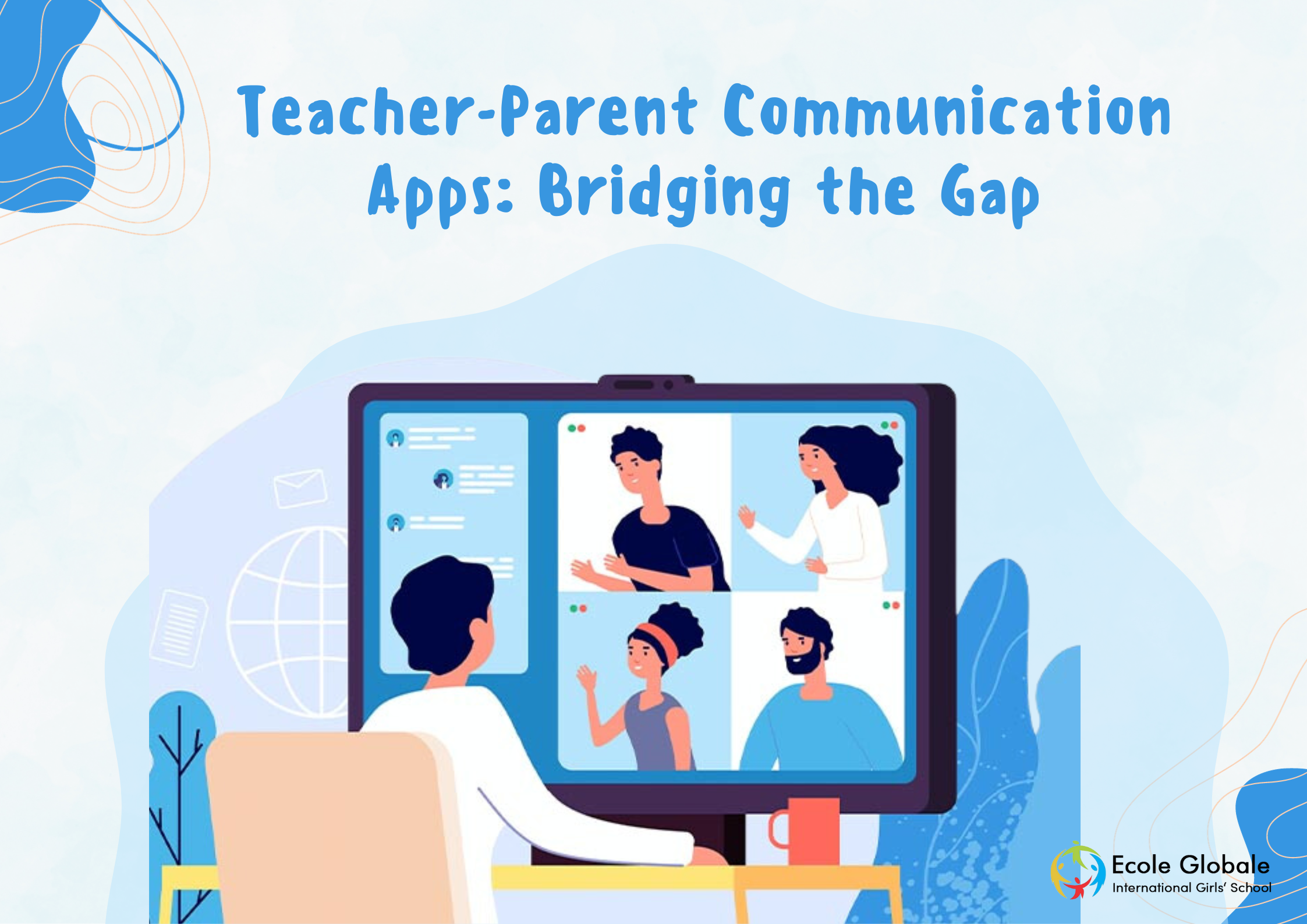Communication between teachers and parents is integral to a child’s academic success and overall development. Teacher-Parent Communication Apps serve as innovative tools that play a pivotal role in bridging the gap between educators and parents.
In this section, we will explore the definition of these communication apps, emphasize the importance of fostering solid teacher-parent relationships, and provide an overview of how communication apps effectively bridge the gap.
Definition of Teacher-Parent Communication Apps
Teacher-Parent Communication Apps are digital platforms that facilitate seamless and instant communication between educators and parents.
These apps leverage technology to ensure a more efficient exchange of information regarding a student’s academic progress, behavior, and overall well-being. By providing a centralized space for communication, these apps enhance collaboration between teachers and parents, creating a more supportive educational environment.
Importance of Communication between Teachers and Parents
Effective communication between teachers and parents is crucial for a child’s academic success and holistic development. Educators and parents can address academic challenges, monitor progress, and create a conducive learning environment when working together.
Communication is a two-way street, allowing teachers to share insights into a student’s performance while enabling parents to provide valuable information about their child’s needs and circumstances.
Overview of How Communication Apps Bridge the Gap
Teacher-Parent Communication Apps act as a bridge, connecting the school and home environments. These apps provide a real-time and convenient means of sharing information, fostering a collaborative partnership.
These apps overcome traditional barriers by offering a secure and efficient communication channel, ensuring parents stay informed and engaged in their child’s education. This section will delve into the transformative impact of these apps on teacher-parent relationships.
Benefits of Teacher-Parent Communication Apps
-1.png)
Effective communication between teachers and parents through dedicated apps yields many benefits that positively impact students, parents, and educators.
Improved Student Performance
Monitoring Academic Progress
Teacher-Parent Communication Apps allow parents to monitor their child’s academic progress closely. Through features such as grade updates, assignment submissions, and test scores, parents gain insights into their child’s strengths and weaknesses. This real-time feedback facilitates proactive intervention and support, improving academic outcomes.
Identifying Areas of Improvement
Teachers can use communication apps to communicate specific areas where a student may need additional assistance or focus. This targeted feedback helps parents understand how they can best support their child’s learning journey and collaborate with teachers to address challenges.
Enhanced Parental Involvement
Encouraging Parent Participation
Teacher-Parent Communication Apps encourage active parental involvement in a child’s education. By providing a platform for parents to engage with teachers, ask questions, and participate in discussions, these apps foster a sense of community and shared responsibility for a student’s learning journey.
Strengthening the Home-School Connection
Communication apps strengthen the connection between the home and school environments. Parents can stay informed about school events, curriculum updates, and extracurricular activities, allowing them to align their support with the school’s educational goals.
Timely Feedback and Updates
Real-time Notifications
Communication apps enable teachers to send real-time notifications regarding important events, announcements, or updates. Whether it’s information about upcoming assessments, parent-teacher meetings, or school activities, these instant notifications keep parents in the loop, promoting timely and informed decision-making.
Instant Communication of Important Events or Announcements
Teachers can use communication apps to instantly communicate important information, such as school closures, emergencies, or changes in schedules. This ensures that parents are promptly informed and can respond accordingly, fostering a sense of transparency and trust between the school and parents.
Features of Effective Teacher-Parent Communication Apps
The effectiveness of Teacher-Parent Communication Apps lies in their features and functionalities. A successful app should be user-friendly, secure, and capable of meeting the diverse needs of both educators and parents.
User-friendly Interface
A key feature of effective communication apps is a user-friendly interface. The app should be intuitive and easy to navigate, ensuring that both teachers and parents can access and utilize its features without encountering technical challenges.
Secure and Private Communication
Ensuring the privacy and security of communication is paramount. Effective communication apps employ robust encryption measures to safeguard sensitive information, providing a secure space for teachers and parents to discuss a student’s progress and well-being.
Multilingual Capabilities
Recognizing the diversity of the school community, communication apps should ideally offer multilingual capabilities. This feature ensures that parents from different linguistic backgrounds can fully participate in communication, breaking down language barriers.
Integration with School Systems
Seamless integration with existing school systems is essential for the success of communication apps. This integration allows for automatically syncing data, such as grades and attendance records, reducing manual input and streamlining the communication process.
Customizable Settings for Notifications
Teachers and parents have different preferences when it comes to receiving notifications. Effective communication apps provide customizable settings that allow users to choose the type and frequency of notifications they wish to receive. This customization enhances user experience and ensures the app aligns with individual needs.
Popular Teacher-Parent Communication Apps

An array of Teacher-Parent Communication Apps exists, each offering unique features to meet the specific needs of educators and parents. In this section, we will provide an overview of widely used apps, discuss their key functionalities, and highlight the success stories and testimonials from users.
Overview of Widely Used Apps
Remind:
Remind is a widely used communication app that enables teachers to send announcements, assignments, and important updates to parents and students. It supports real-time messaging and allows for multimedia communication.
ClassDojo:
ClassDojo focuses on building a positive classroom culture by providing a platform for teachers to share feedback, achievements, and behavior updates with parents. It includes features for direct messaging and the sharing of photos and videos.
Bloomz:
Bloomz is an all-in-one communication app that integrates communication, coordination, and community-building features. It supports messaging, event scheduling, and volunteer coordination to enhance parental involvement.
Features and Functionalities of Each App
Remind:
Remind facilitates instant communication through announcements and messages. Teachers can schedule messages, send attachments, and engage in one-on-one or group conversations. The app also allows for language translation to accommodate diverse communities.
ClassDojo:
ClassDojo focuses on positive reinforcement by allowing teachers to award points for positive behavior and accomplishments. Parents can receive real-time updates on their child’s behavior, view photos and videos from the classroom, and communicate directly with teachers.
Bloomz:
Bloomz offers a comprehensive set of features, including event and calendar management, volunteer sign-ups, and communication tools. It centralizes communication, ensuring that parents have access to all relevant information in one place.
Success Stories and Testimonials
Users of Teacher-Parent Communication Apps often share success stories and testimonials that highlight the positive impact of these tools on their educational experiences. Parents and teachers appreciate the convenience, transparency, and improved collaboration that these apps bring to their interactions.
Challenges and Solutions

While Teacher-Parent Communication Apps offer numerous advantages, their implementation may face challenges. Addressing these challenges is crucial for ensuring the successful integration and sustained use of these communication tools.
Addressing Privacy Concerns
Privacy concerns are a common challenge associated with communication apps. Schools and app developers must prioritize data security and implement robust privacy measures. Providing transparent information about data handling practices and obtaining informed consent from users can help address privacy concerns.
Overcoming Technological Barriers
Not all parents may have access to smartphones or the internet, posing a technological barrier to effective communication. Schools can address this challenge by implementing alternative communication methods, such as email, phone calls, or in-person meetings, to ensure that all parents can stay connected.
Ensuring Equal Access for All Parents
Socioeconomic disparities can impact access to technology, creating inequality in communication access. Schools should adopt inclusive strategies, such as providing devices or organizing workshops for parents to familiarize them with communication apps, ensuring that all families have equal opportunities to engage.
Dealing with Resistance to Change
Resistance to change is a common challenge when introducing new technologies. Schools should proactively communicate the benefits of communication apps to both teachers and parents, offer training sessions, and create a supportive environment that encourages the adoption of these tools.
Best Practices for Implementing Teacher-Parent Communication Apps

Successful implementation of Teacher-Parent Communication Apps requires careful planning and adherence to best practices. In this section, we will explore key strategies for maximizing the effectiveness of these apps.
Collaboration Between Teachers, Parents, and Administrators
Effective implementation begins with collaboration. Schools should involve teachers, parents, and administrators in the decision-making process, considering their input and addressing concerns. This collaborative approach fosters a sense of ownership and collective responsibility for the success of communication apps.
Providing Training and Support for Users
Schools should provide comprehensive training and support for teachers and parents to ensure successful adoption. Training sessions can cover app features, navigation, and troubleshooting, empowering users to make the most of the communication tools. Ongoing support, including help desks or forums, can address any issues that may arise.
Establishing Clear Communication Policies
Clear communication policies are essential for creating a structured and consistent approach to using communication apps. Schools should define communication frequency, content, and expected response times guidelines. Establishing these policies helps maintain a professional and focused communication environment.
Collecting Feedback for Continuous Improvement
Continuous improvement is key to the long-term success of communication apps. Schools should actively seek feedback from teachers, parents, and students to identify areas for improvement. Regular assessments of app functionality, user experience, and overall satisfaction can guide updates and enhancements.
Future Trends in Teacher-Parent Communication
As technology continues to evolve, the landscape of Teacher-Parent Communication Apps is poised to undergo further transformation. In this section, we will explore emerging trends that may shape the future of communication between educators and parents.
Integration of Artificial Intelligence for Personalized Communication
The integration of artificial intelligence (AI) is expected to revolutionize teacher-parent communication by enabling personalized interactions. AI algorithms can analyze data to provide tailored insights into a student’s learning style, academic strengths, and areas for improvement. This personalized approach enhances communication by addressing individual needs.
Expansion of Features to Address Diverse Needs
Future communication apps are likely to expand their features to cater to diverse needs within the education community. This may include enhanced language support, features for students with special needs, and tools that promote cultural inclusivity. The goal is to create communication platforms that are adaptable and accessible to all stakeholders.
Potential Challenges and Opportunities for Growth
As communication apps advance, new challenges may emerge. Balancing the integration of advanced technologies with user-friendly interfaces and maintaining a focus on privacy will be critical. The opportunities for growth lie in addressing these challenges, ensuring that communication apps evolve to meet the changing needs of educators, parents, and students.
Conclusion
Teacher-Parent Communication Apps serve as powerful tools that bridge the gap between educators and parents, fostering collaboration and support for students.
The benefits of improved student performance, enhanced parental involvement, and timely communication are evident. The features of effective communication apps, insights into popular platforms, and success stories underscore the transformative impact of these tools.
Despite the challenges associated with privacy, technology access, and resistance to change, implementing best practices can overcome these obstacles.
By prioritizing collaboration, providing training and support, establishing clear communication policies, and collecting feedback for continuous improvement, schools can maximize the positive impact of communication apps.
Looking ahead, the integration of artificial intelligence and the expansion of features to address diverse needs present exciting possibilities for the future of teacher-parent communication. As these trends unfold, schools need to stay adaptive, ensuring that communication apps continue to serve as dynamic tools that strengthen the partnership between educators and parents for the benefit of every student.










